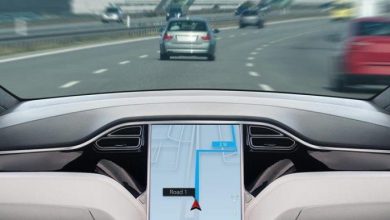The Impact of Autonomous Cars on Traffic Safety: A Critical Analysis

The Impact of Autonomous Cars on Traffic Safety: A Critical Analysis
Introduction
Autonomous cars, also known as self-driving cars or driverless cars, have been making waves in the automotive industry and capturing the attention of both technology enthusiasts and safety advocates. With the potential to revolutionize transportation, one of the key aspects to consider is the impact of autonomous cars on traffic safety. In this blog post, we will critically analyze this impact and explore the key factors involved.
The Potential Benefits of Autonomous Cars on Traffic Safety
1. Reduction in Human Error
One of the biggest advantages of autonomous cars is their ability to eliminate human error while driving. Majority of traffic accidents and fatalities occur due to human factors such as distracted driving, drunk driving, speeding, and reckless driving. With autonomous cars taking over the control, the risk of accidents caused by these factors can be significantly reduced, thus enhancing overall traffic safety.
2. Improved Reaction Time and Predictive Capabilities
Autonomous cars are equipped with advanced sensors, radar systems, and artificial intelligence algorithms that enable them to detect and respond to potential hazards much faster and more accurately than human drivers. Furthermore, autonomous car systems can anticipate and predict the behavior of other vehicles on the road, allowing for safer and more efficient navigation.
Potential Challenges and Considerations
1. Technological Limitations
While autonomous car technology has come a long way, it still has some limitations. Adverse weather conditions, complex road construction zones, and inconsistent traffic signs can sometimes challenge the capabilities of autonomous systems. It is crucial to continue advancing the technology to address these limitations and ensure a seamless and safe driving experience.
2. Transition Period and Coexistence with Human Drivers
A critical aspect to consider is the transition period during which autonomous cars will share the roads with human-driven vehicles. Managing the interaction between the two types of vehicles is essential to prevent potential conflicts on the road. It would require clear regulations, proper infrastructure, and driver education to ensure a smooth coexistence.
Frequently Asked Questions (FAQs)
Q1. Are autonomous cars completely safe?
A1. While autonomous cars have the potential to enhance traffic safety, they are not completely immune to accidents. Technological limitations, software glitches, or unexpected situations may still pose risks. However, as the technology progresses and more data is collected, autonomous cars are expected to become even safer than human-driven vehicles.
Q2. Will autonomous cars eliminate all traffic accidents?
A2. While autonomous cars have the potential to greatly reduce traffic accidents, it is unrealistic to expect complete elimination. Autonomous cars cannot control the actions of pedestrians, cyclists, or other external factors that may contribute to accidents. However, their advanced capabilities and safety features should significantly lower the risk of accidents compared to human drivers alone.
Q3. When will we see fully autonomous cars on our roads?
A3. The timeline for fully autonomous cars hitting the mainstream market is uncertain. Various companies are in different stages of development and testing. However, many experts predict that certain regions may witness limited deployment of autonomous cars in the next few years, with widespread usage expected within the next decade.
Conclusion
In conclusion, the impact of autonomous cars on traffic safety is promising. With the potential to eliminate human error, improve reaction times, and predict potential hazards, autonomous cars are poised to revolutionize transportation and make our roads safer. However, it is important to address the challenges and limitations associated with the technology to ensure a seamless transition and maximize the benefits for traffic safety.



